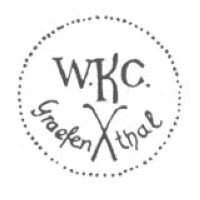
Image 011215-01-01
Used around 1891, the dotted circle proved impractical and was soon dropped.
The company began production in 1891 and most items they produced were predominantly made for export. The business slowly grew and in 1913 employed just over 200 people, producing items like religious figures, bathing beauties, frozen Charlottes, bonnet dolls, doll heads and Kewpies. Based on their flawless reputation, the company became one of the few selected European facilities which were allowed to produce Mickey Mouse figures under Disney licence from 1929 onwards which resulted in a few more people being employed extra for the job and so the company reached their peak employment of 250 people in 1930, a number that remained constant until 1937. The company also produced aquarium-related products simply marked Relpaw, these were custom-made for US retailer Nicholas Wapler, New York.
During World War II, the company was ordered to produce items for the German war machine and all master molds were simply stored away for future use. After World War II the factory was put under military management until 1949 and following the founding of the German Democratic Republic the factory was constrained to produce utilitarian items such as beer steins and ordinary tableware.
The factory was nationalized in 1972 and became known simply as VEB Gebrauchsporzellan. They continued to produce their own items under their own brand until the company was put under management of the larger VEB Vereinigte Zierporzellan-Werke Lichte combine which dictated which items had to be produced. As all items had to be marked as Lichte products, there are no own marks for the Weiß, Kühnert & Co. company from 1976 onwards. After German reunification in 1990 the totally run down factory was instantly closed and the buildings remained empty for some time before they were sold to the German Doll Company in 1996.
The German Doll Company was founded in 1996 by Roland Schlegel ("The German Doll Company GmbH, Blankenburger Tor 2, 07318 Saalfeld/Saale"). This company purchased the contents of the factory, claiming to have saved many of the molds which were then used to reissue quite a few items. The basic idea was to continue using the factory as a museum factory and thus ensure the protection of the history it contained but the whole business went foul pretty quick. Entwined therein was co-founder Susan Bickert, who became managing director of the US business ("The German Doll Company, Inc., 2965 Merrimont Drive, Troy, Ohio 45373") founded in 1998.
A short time later people noticed a few flaws in the shiny image of the company and it did not even need the rather disturbing change from "www.german-doll.com" to "www.german-doll.org" to convice people that something fishy was going on. People had paid for goods but never received delivery, others claimed items to be fake as they had been made believe to purchase antique goods while being sent brand new items. From original molds, maybe, but the figures were not old and definitely not antique.
Big words in marketing, too, with claims of being the "worldwide exclusive producer of Kewpie porcelain dolls under licence of Jesco/USA". At the same time statements like being a member of the United Federation of Doll Club, the Austria French Bulldog Club or the International Rose O`Neill Club really did not impress folk which by then could not care less.
And it simply did not get better. Talking about Rose O`Neill and Kewpies nowadays often ends up with having to discuss the reproductions (some people said "fakes") made and sold by the German Doll Company which had managed to purchase many of the (then) still existing Hermann Voigt molds. The batch also included some original Kewpie molds; shortly afterward a collection of "long lost" Kewpies in excellent condition was put up for auction. While the achieved price was impressive, the stir in the collector scene was far greater. The German Doll Company tried to cover its back by constructing a story in which the items had been found in the attic of a factory building, something which soon turned out to be a lie.
Last press activity I bumped into back then was in 2003 on Relpaw aquarium items. In 2005 the company started to fade into oblivion; I did not follow it any further but in May 2007 I was contacted via eMail by Bickert and Schlegel who independently claimed that the company was still alive.
On 2019-MAY-14th (they do have something with May, these two) Susan Bickert contacted me per mail, asking me if I could ID a figure. I did her the favour; in the process she said "my friend had a severe head injury about three years ago" and that "his memory is just awful. It becomes very frustrating for him." which I guess is a comment on Roland Schlegel. No schadenfreude on my part; bodily harm is nothing that one should wish upon others.

Image 011215-01-01
Used around 1891, the dotted circle proved impractical and was soon dropped.
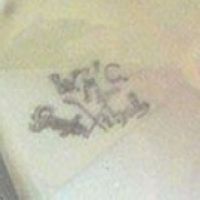
Image 011215-01-02
Used around 1900, note the missing "Germany" underneath the mark.
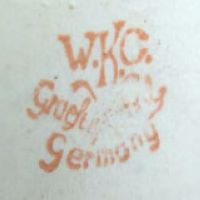
Image 011215-01-03
Used between approximately 1905 and 1956.
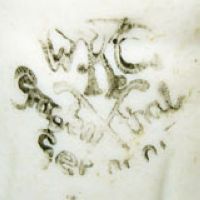
Image 011215-01-04
Used between 1905 and 1956.
(Picture: Sheila Gersten)
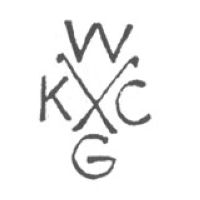
Image 011215-01-05
Used between 1956 and 1972.
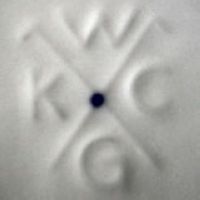
Image 011215-01-06
Used between 1956 and 1972.
(Picture: Mark Powell)
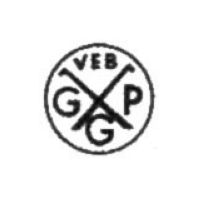
Image 011215-02-01
Used between 1972 and 1976.
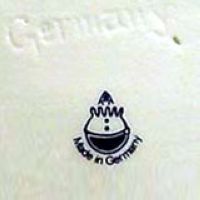
Image 011215-03-01
The German Doll Company mark.
© 2004-2026 C.S.Marshall, all rights reserved